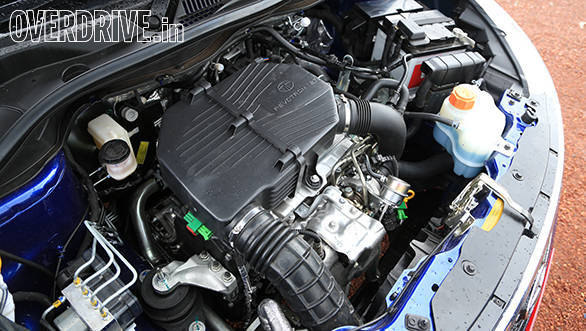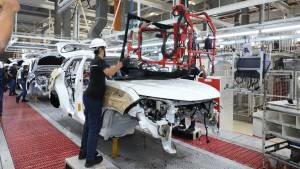Tata Motors' Revotron engine explained
Tata Motors has been pushing the 1.2-litre Revotron engine quite hard into the public domain to the point where even Narain Karthikeyan is used as a brand ambassador for an engine. What makes it so special and why is Tata Motors pinning all its hopes on it?

I'll take the last question first. Tata Motors' turnaround is not just about being a dominant player in the Indian automotive industry. Its plans are much more global in that sense and it does not involve one car but a slew of automobiles in various body styles. These will be launched not just in India but in international markets as well, presumably for now, all the markets Tata Motors is already present in but with a few more added to that list. Tata Motors built a tech centre in Coventry, U.K before it acquired JLR and this is where a large part of the work on the engine took place. The intention was to raise engineering, design and technology to global standards and this involved building a massive workforce of engineers and technicians spread across 11 technical centres in five countries.
Headlining all of these cars however is going to be one engine that has been developed in-house but with several partners assisting in various areas. This one engine is the Revotron, a turbo-charged multi-point fuel injected engine feeding off petrol. Interestingly the name Revotron was derived from two words, Revo which is part of revolution and tron from 'Tronel' which according to Tata Motors is French for balance. However I've been searching the word tronel on several dictionaries and I can't seem to find any reference to it, so if anyone out there knows if that really means balance do let me know.
Displacement is listed at 1,193cc with 90PS of peak power coming in at 5,000rpm and 140Nm maximum torque available from 1,750 to 3,500rpm. The turbo kicks in at 1,700rpm though there is barely any perceptible turbo lag and the power delivery feels linear throughout. It's also one of the smoothest petrols Tata Motors has ever built and it is comparable to any other turbo petrol available globally in the same displacement category in terms of refinement and smoothness.
The Revotron engine offers three driving modes, an Eco, City and Sport mode of which City is the default setting. Leading technology developers, Bosch have assisted Tata Motors with the engine management system. Latest generation microprocessors manage the driving modes as well as the fueling and delivery.
 The Tata Zest is one of the slew of cars that are to feature the new Revotron engine
The Tata Zest is one of the slew of cars that are to feature the new Revotron engine
This 2-valve per cylinder SOHC engine might sound a bit jaded as the competition resorts to a more efficient 4-valve per cylinder layout. But an undersquare bore stroke configuration (75mm x 67.5mm) provides good torque characteristics which can be seen in the flat torque curve while a compression ratio of 9 (+/-0.3):1 ensures higher efficiencies.
AVL, a name we should be familiar with because of their association with Royal Enfield and its 3,50cc mill, brought in their expertise to work on the intake system of the Revotron. This was done to keep emissions and efficiency within acceptable limits. Another partner that brought in their expertise was Pune-based ElringKlinger who worked towards developing the asymmetric pistons with PVD coated piston rings to help reduce frictional losses, thereby improving combustion and as a result, efficiency.
How does the Revotron engine fare on the road? Find out with our road test of the new Tata Zest
-NA-
1248cc
Manual
-NA-
200
20.65 Kmpl













